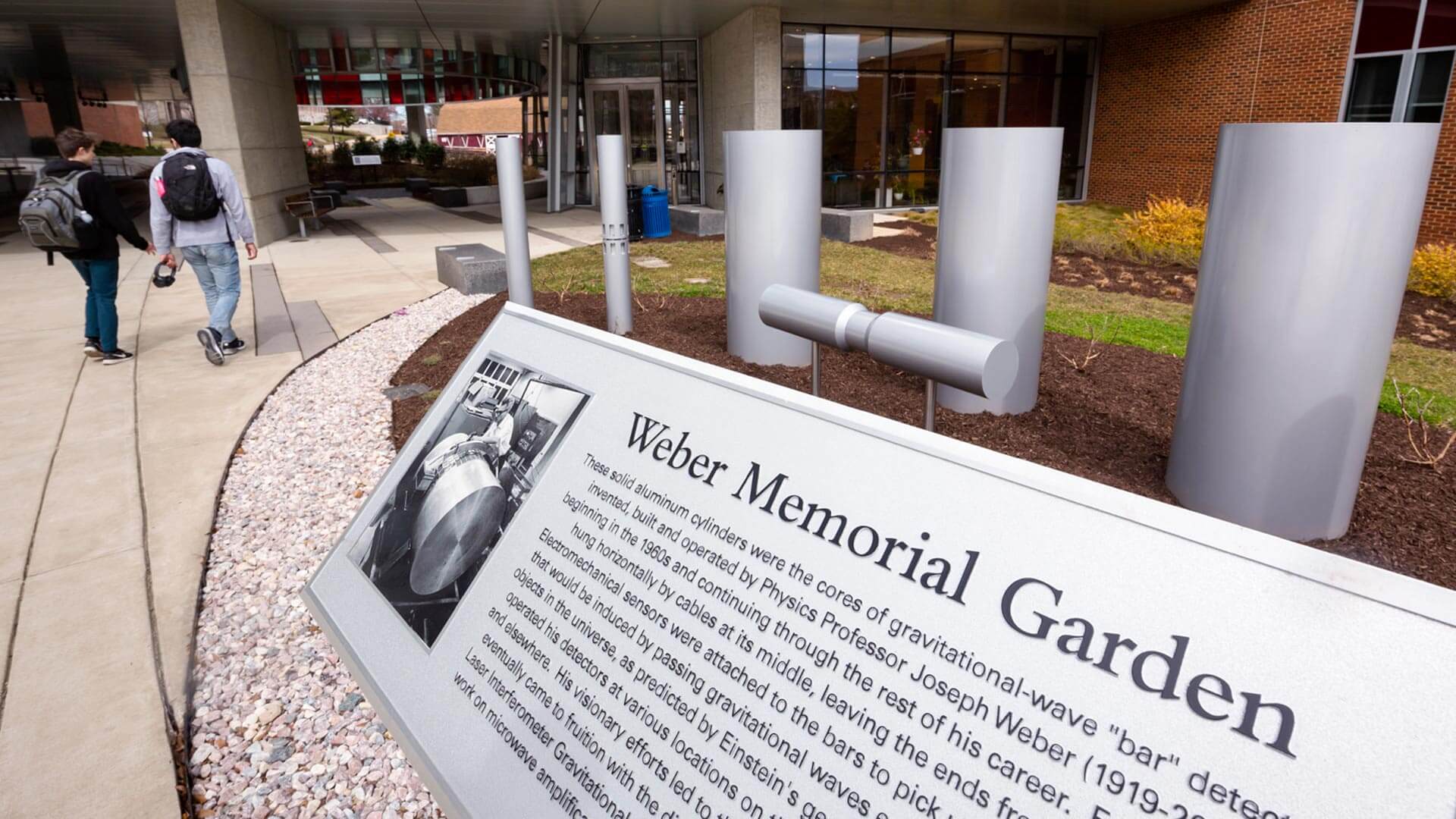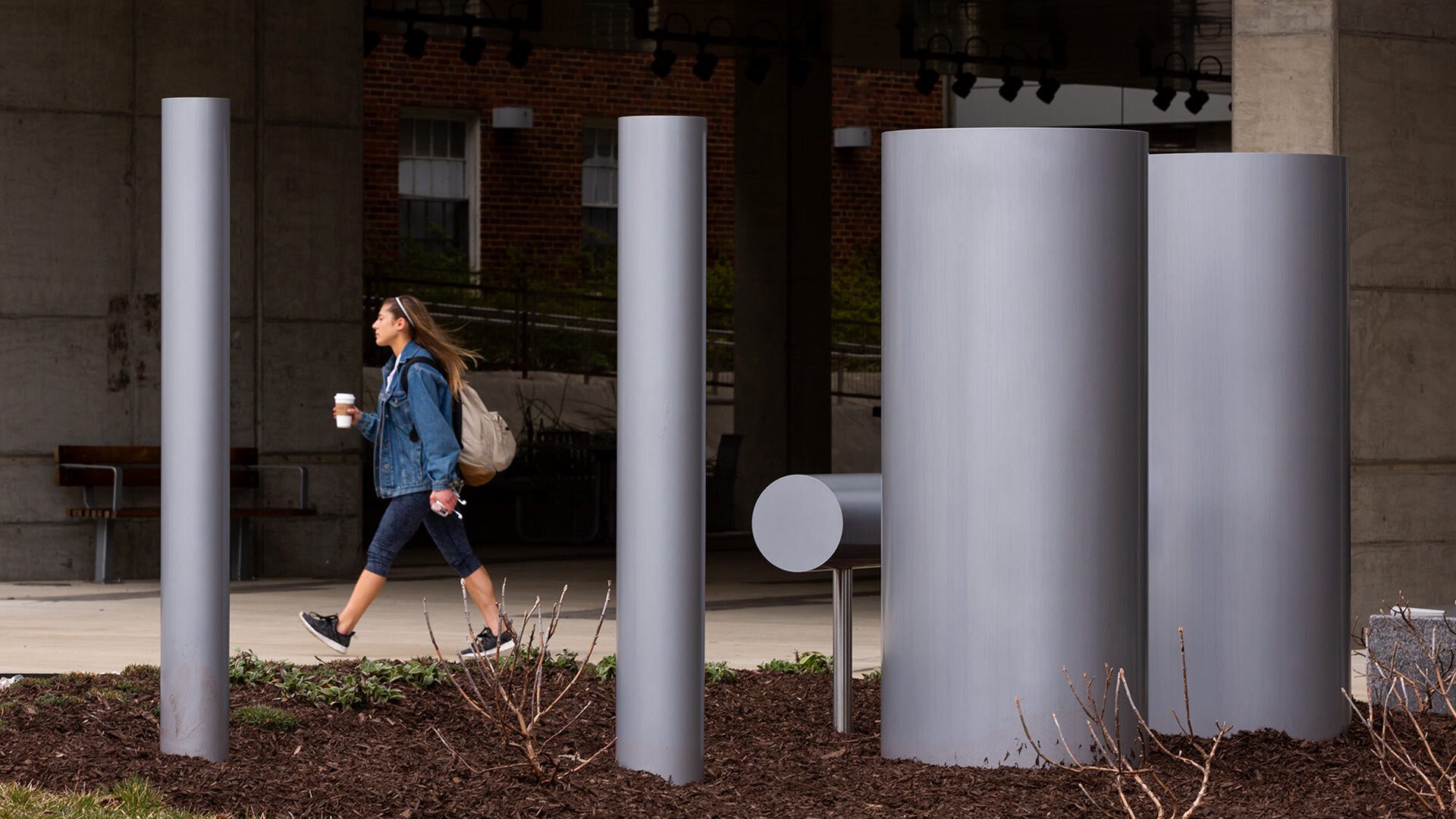- March 12, 2019
- By Chris Carroll
A late University of Maryland physicist whose audacious ideas decades ago about the detection of gravitational waves today are providing new insights into how the universe works will now be permanently honored on campus.
The Department of Physics and the College of Computer, Mathematics, and Natural Sciences will dedicate the Weber Memorial Garden at 3 p.m. today outside the Physical Sciences Complex. The garden features massive, standing aluminum cylinders that physics Professor Joseph Weber designed to detect gravitational waves. These are ripples in space-time predicted by physicist Albert Einstein’s theory of gravitation, but which even he didn’t believe were measurable.
In this case, Einstein was wrong, and in 2017, the principal scientists of the Laser Interferometer Gravitational-Wave Observatory (LIGO) won the Nobel Prize in physics for detecting gravitational waves resulting from the collision of two black holes. (One of those three Nobel laureates, Rainer Weiss, will be attending today’s ceremony and speaking on campus at 4 p.m.)
The discovery opens up a new field of astronomy that doesn’t rely on electromagnetic waves such as visible light or radio waves. It has already resulted in some surprising discoveries deep in space, including how neutron star collisions are responsible for gold and other heavy elements.
Though Weber himself announced he had found gravitational waves in 1969, to great fanfare in the world of science, few if any today believe he was correct.
He fought vociferously through the 1970s and 1980s against a growing consensus of physicists that his method had failed. But none dispute that he created the field out of nothing, and deserves some of the credit for its eventual success.
“Before Weber, I don’t think anyone had ever spent more than 10 minutes trying to understand how to detect gravitational waves in the lab,” said physics Professor Emeritus Charles Misner.
The “Weber bars” designed to detect the subtle gravitational waves weren’t capable of such a feat, but scientists attracted to the field by Weber’s 1969 announcement were as determined as he was, Misner said. “They tried, and they kept trying, and eventually, after 50 years and a billion dollars, they discovered gravitational waves.”
Had Weber never made his incorrect claim, it may well have doomed the search for gravitational waves, Misner said.
“(LIGO) was such a difficult thing to get built, that if it had started 10 years later, it would have hit a political wall,” he said. “It might have been another century before anyone discovered gravitational waves.”
